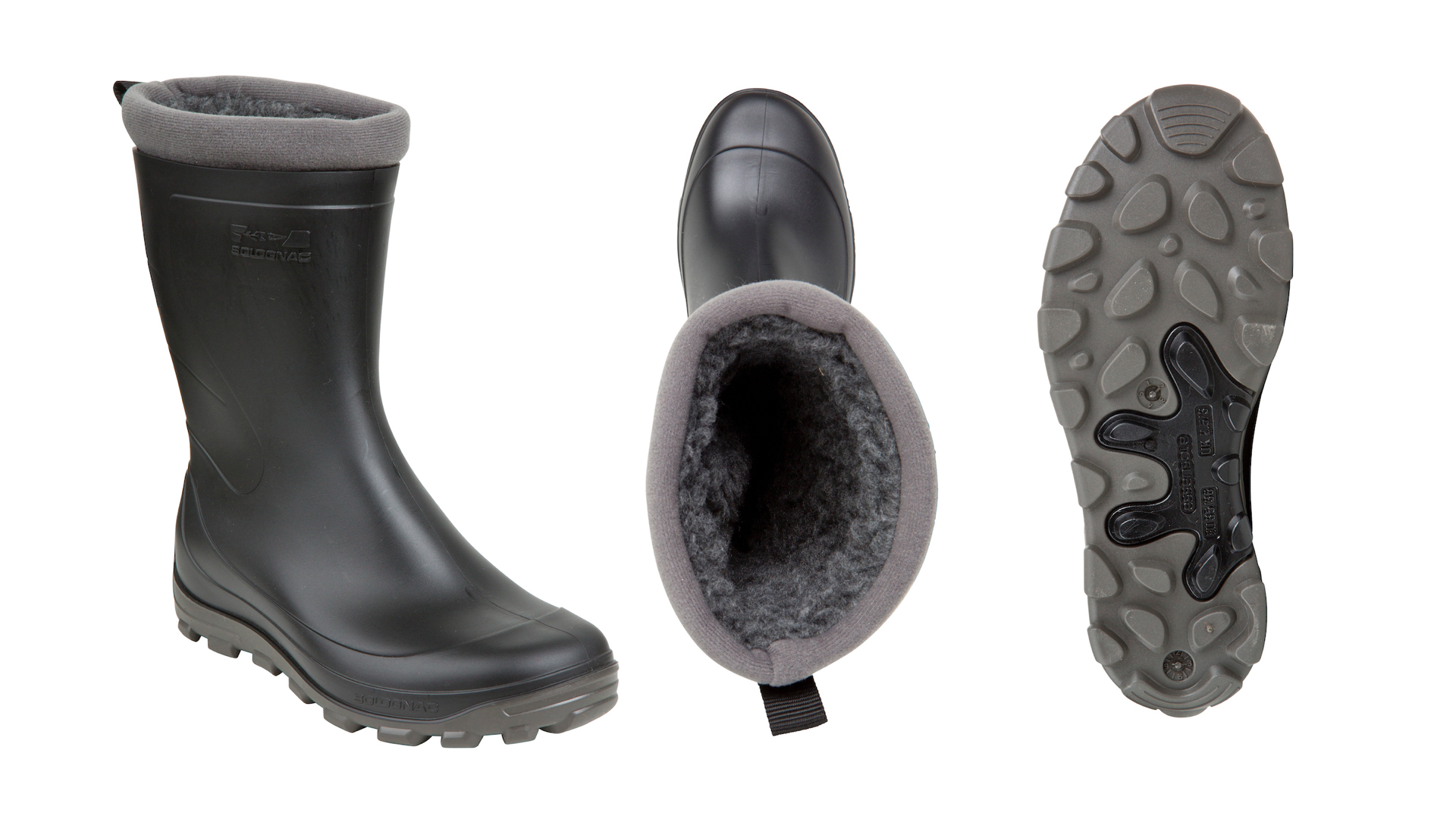Advnture Verdict
Bargain-priced boots available for everyone, that keep your feet warm and dry in all kinds of conditions, and feature good grip.
Pros
- +
Great price
- +
Warm lining
- +
Excellent grip
- +
Heel spur
Cons
- -
Lining rips
You can trust Advnture
Decathlon Solognac Warm Short Wellies: first impressions
The Decathlon Solognac Warm Short Wellies come from a range that had one great advantage: price. If, like us, you balk at the eye-blurring price asked by brands for some fairly basic-looking wellington boots, then the Solognac range of down-to-earth wellies will be a welcome relief.
And there are plenty of things to love about these boots, beyond the bargain price, but that helps make them some of the best wellingtons you should consider. We tested the short version with a warm fleecy lining, which are good for many scenarios, but the Solognacs are also available in longer iterations, some with neoprene lining – plus, of course, a slighter steeper (but still comparatively cheap) price tag.
Besides the snug lining (which will allow wearers to work outdoors for 40 minutes in temperatures as low as -21°C / -6°F, or comfortably stand still for half an hour at -12°C / 10.5°F according to the brand), common features include a heel spur, to help get them off, and an outsole that has some serious lugs (so you might want to consider if you can wear wellington boots for hiking).
These boots are available (in black only) for men, women and children.
• RRP: $25 (US) / £20 (UK)
• Gender specification: Men’s and Women’s
• Sizes (US): Men’s 7-12 Women’s 3.5-7.5
• Insulation: Fleece
• Colors: Black
Decathlon Solognac Warm Short Wellies: on the trails
While it’s not made by a fancy component brand, the robust rubber outsole on these boots is excellent, offering great grip on all sorts of terrain in all kinds of conditions. And the boots have a little heel spur on the back of this outsole, to help with getting them off, which is a very useful and surprisingly rare inclusion on wellington boots.
The upper is made from an unfussy thermoplastic material, which won’t turn any heads at festivals, but does keep your feet dry in wet conditions – don’t know about you, but that’s what we buy wellies for.
The fleecy lining really is cozy, and it can be removed and washed easily too. If anything, it’s a bit too warm for many months of the year – you can, of course, remove it altogether, and wear different thicknesses of hiking socks, but you need to factor this in to the size boot you buy (check out our guide to the best hiking socks for some options).
All the latest inspiration, tips and guides to help you plan your next Advnture!
What really lets the Solognacs down, is the way this lining connects to the main boot, via a pull loop that threads through the cuff area of the boot. This becomes the thing you use to pull the boots on – it isn’t really fit for that purpose and tears easily. A rubber or tougher synthetic pull loop would have resolved this issue very easily. This aside, they do what you want a welly to do, without costing a fortune.

Author of Caving, Canyoning, Coasteering…, a recently released book about all kinds of outdoor adventures around Britain, Pat has spent 20 years pursuing stories involving boots, bikes, boats, beers and bruises. En route he’s canoed Canada’s Yukon River, climbed Mont Blanc and Kilimanjaro, skied and mountain biked through the Norwegian Alps, run an ultra across the roof of Mauritius, and set short-lived records for trail-running Australia’s highest peaks and New Zealand’s Great Walks. He’s authored walking guides to Devon and Dorset, and once wrote a whole book about Toilets for Lonely Planet. Follow Pat’s escapades on Strava here and Instagram here.

